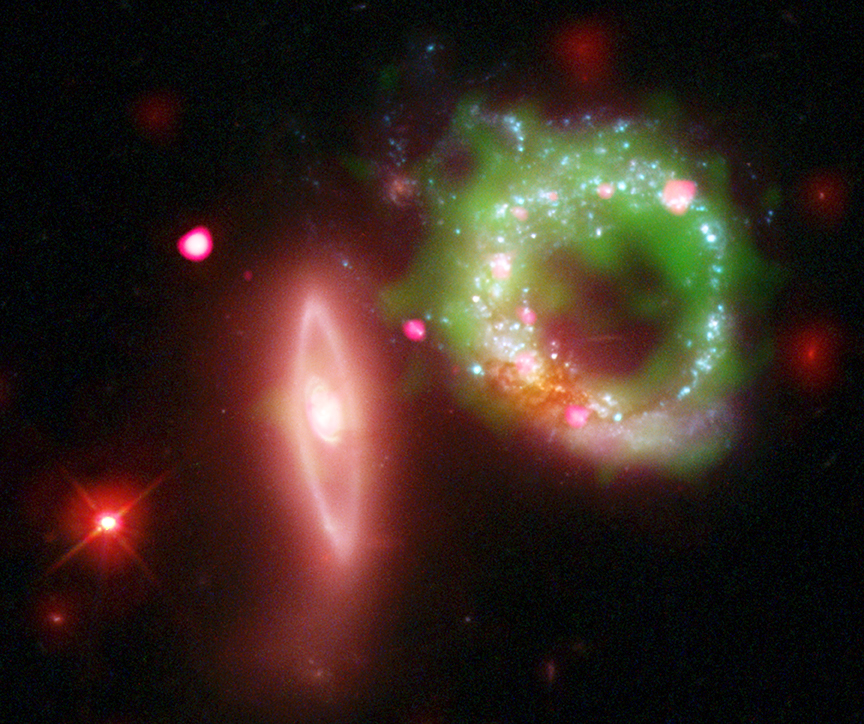Cosmic Valentine's Day Photo Reveals Black Hole Ring

Rings of gold and precious jewels may be traditional gifts between lovebirds on Valentine's Day, but what about a giant ring of black holes? A stunning image from space reveals just that.
The black hole ring photo, which NASA released today (Feb. 9), was taken using several space telescopes across different parts of the light spectrum. Two interacting galaxies, known collectively as Arp 147, set the stage for the spectacular view.
Arp 147 is about 430 million light-years from Earth in the constellation Cetus, the Whale. It contains the mixed-up leftovers from the collision of a spiral galaxy and an elliptical galaxy that unleashed an expanding wave of star formation.
It is the wave of stars that creates the ring effect. The wave's collection of massive young stars gives it a gleaming blue hue. But these stars as huge and short-lived, lasting no more than a few million years before they explode as supernovas or collapse into black holes.
The black holes pepper the ring like cosmic jewels, with their powerful X-ray emissions appearing as bright pink specks. Another galaxy is also present in the image, appearing as a dull red, along with a bright star and distant quasar.
To make the newly released Arp 147 image, NASA combined observations from the Chandra X-ray Observatory (which captured the black holes) and the Hubble Space Telescope (visible light). Other observations by NASA's Spitzer Space Telescope in the infrared range, and ultraviolet studies using the space agency's Galaxy Evolution Explorer, have given astronomers an idea of how fast stars are forming within the ring.
Scientists estimate that the most intense period of star formation ended 15 million years ago, according to a NASA statement. A study based on the combined Arp 147 observations was detailed in the Oct. 1 edition of the Astrophysical Journal.
Breaking space news, the latest updates on rocket launches, skywatching events and more!

Space.com is the premier source of space exploration, innovation and astronomy news, chronicling (and celebrating) humanity's ongoing expansion across the final frontier. Originally founded in 1999, Space.com is, and always has been, the passion of writers and editors who are space fans and also trained journalists. Our current news team consists of Editor-in-Chief Tariq Malik; Editor Hanneke Weitering, Senior Space Writer Mike Wall; Senior Writer Meghan Bartels; Senior Writer Chelsea Gohd, Senior Writer Tereza Pultarova and Staff Writer Alexander Cox, focusing on e-commerce. Senior Producer Steve Spaleta oversees our space videos, with Diana Whitcroft as our Social Media Editor.

